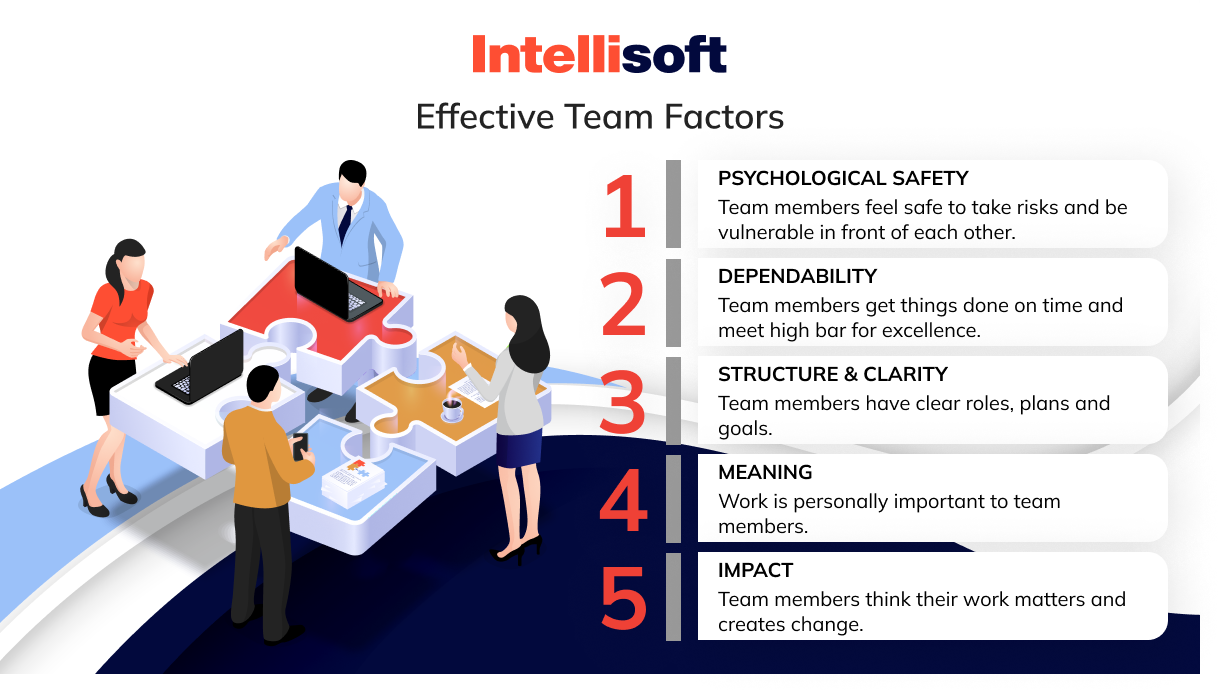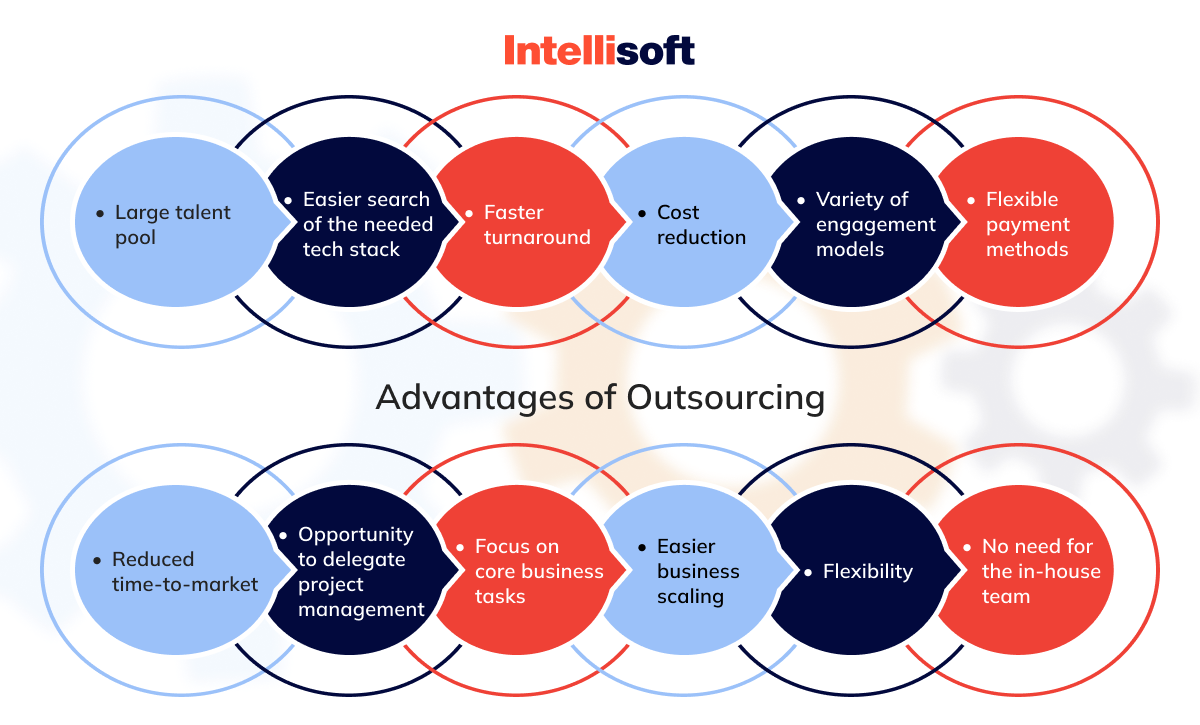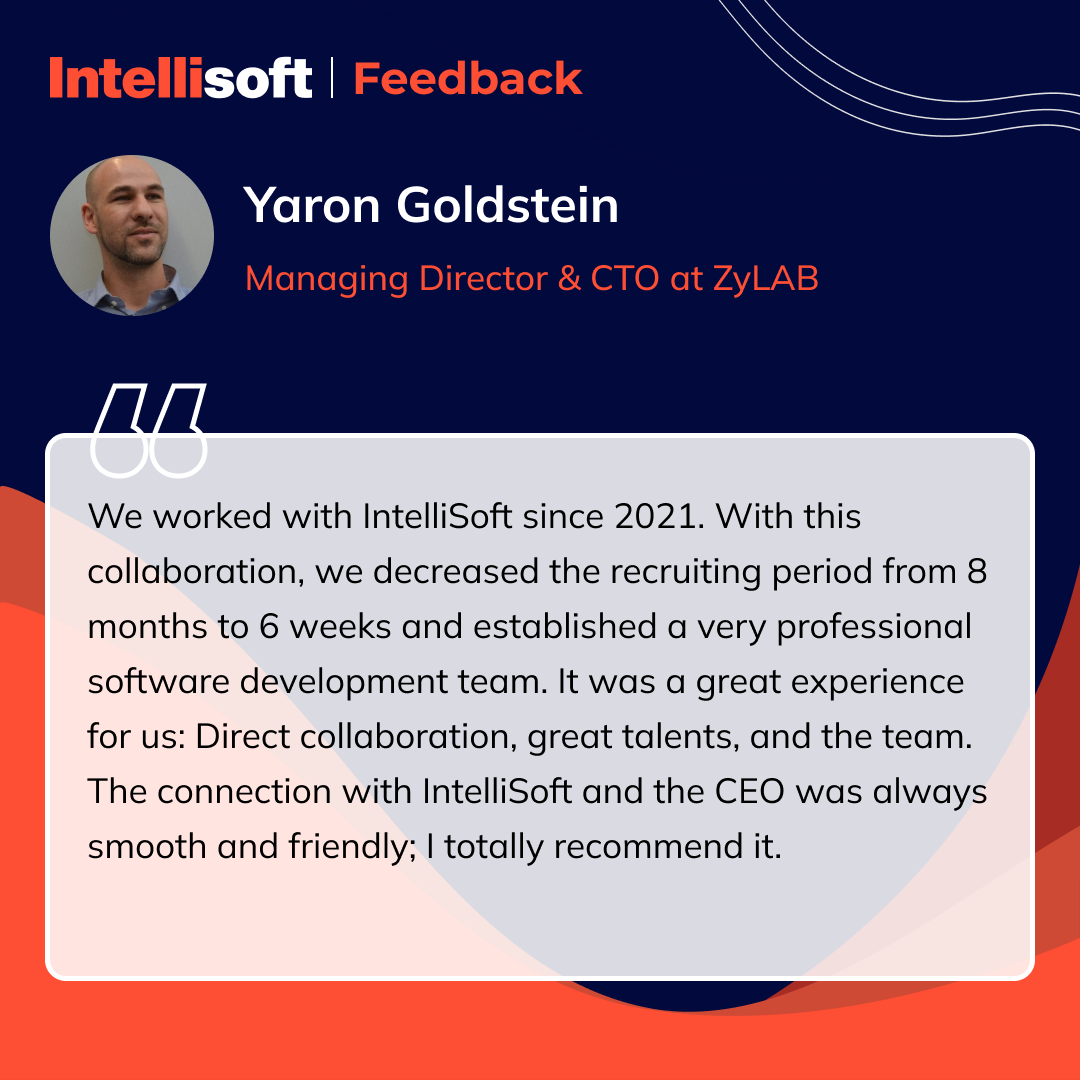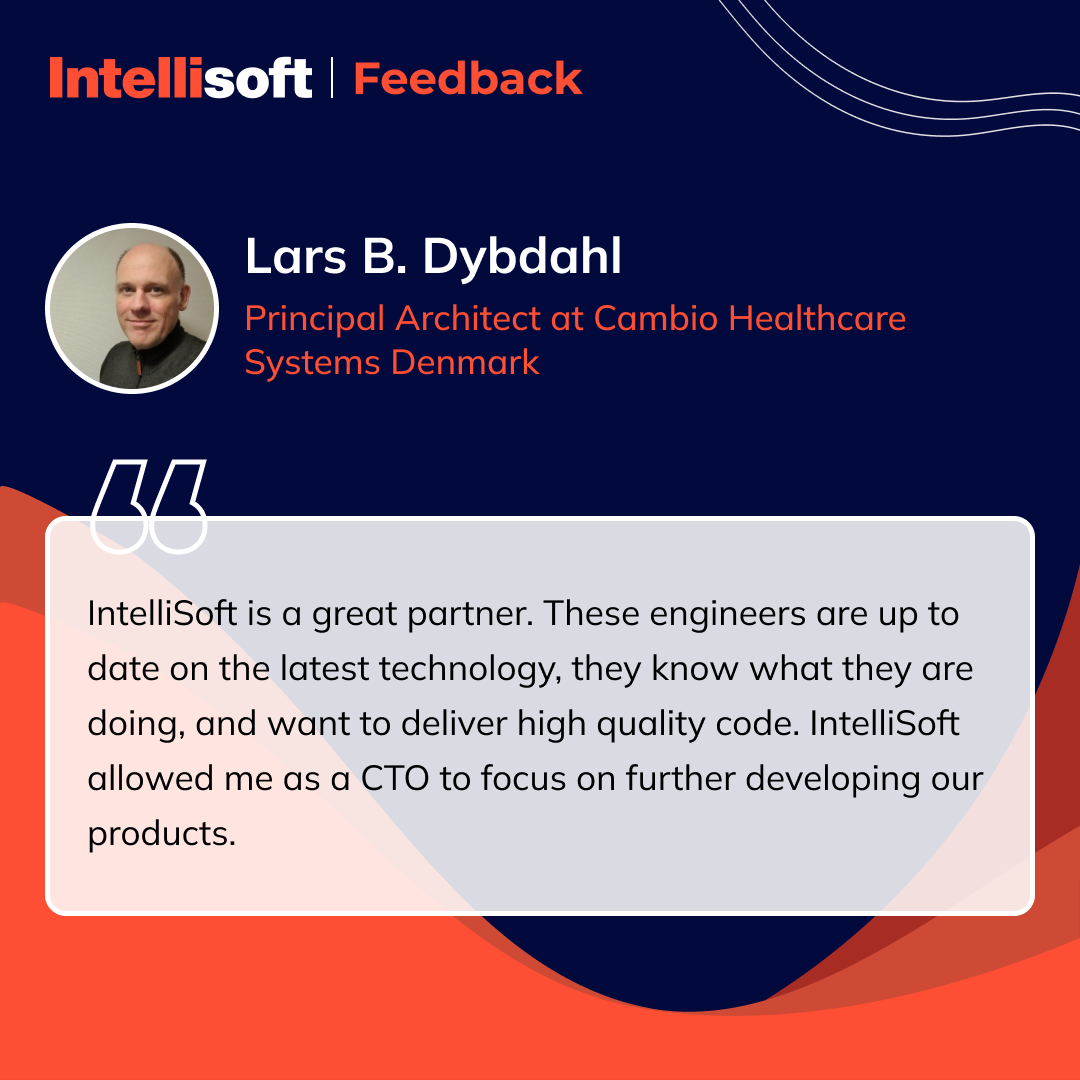Nowadays, everyone in the software world is buzzing about the big trend: outsourcing development team dynamics and building effective outsourced collaboration. Outsourcing is a smart, wallet-friendly way to get things done. But here’s the catch: it’s not just about finding a bunch of super-smart coders. The real magic happens when you’ve got the right mix of people who can work well together, even if they’re miles apart.
Today, we will discuss what makes a team work like a well-oiled machine. We’re going to talk about building a team that’s more Avengers than a group of lone wolves, ensuring everyone’s playing the same game.
We at IntelliSoft know the ins and outs, the dos and don’ts of orchestrating these teams to hit the right targets of project success. We acquired a lot of experience in turning the challenges of geographical distances and cultural differences into strengths. So, let’s talk about how to manage your outsourced software development team effectively.
Table of Contents
Understanding Your Outsourced Development Team
The modern business world is extremely dynamic. The landscape is constantly changing, so to build a successful outsourcing project, first and foremost, you need to understand what kind of team you need. Different types of teams bring unique advantages to the table. Picking the right one can make or break your project. Let’s break down these team types so you can figure out who’s who and what’s what in this remote team world.
Types of Development Teams
There are three main types of outsourcing development teams that we can single out:
- Dedicated teams
- Extended teams
- Project-based teams
A dedicated development team is a group of professionals exclusively committed to a single project. This structure ensures focused expertise, a deeper understanding of project intricacies, and streamlined communication. The team’s sole focus on one project fosters a comprehensive understanding of your business objectives and technical requirements. A dedicated team is perfect for long-term projects that require consistent attention, ongoing development, and a deep immersion in company culture and goals.
An extended team model involves integrating external professionals with your in-house staff, thereby expanding your team’s capabilities without the overhead of hiring new full-time employees. This model leverages the strengths of both in-house and external talent, encouraging a unified team atmosphere and shared objectives. It also allows for scalability and flexibility in managing project resources. This type of team is perfect for businesses looking to scale their development efforts up or down based on evolving project needs, without the commitment of expanding their permanent workforce.
Project-based teams are assembled specifically for the duration of a project, focusing on achieving set objectives within a defined timeline. Once the project concludes, the team is often disbanded. Project-based teams offer high flexibility, allowing you to tailor the team composition to the specific needs of your project. This setup is cost-effective and efficient for managing short-term projects with clear goals. This type of team is perfect for short-term or one-off projects with well-defined scopes and deadlines, where flexibility and specific skill sets are prioritized.
Recently, the concept of an integrated product team is gaining significant traction. An integrated product team is a cross-functional group that brings together diverse expertise, ensuring that every aspect of product development is covered comprehensively.
By fostering close collaboration among specialists in software engineering, design, quality assurance, and project management, an integrated product team can efficiently streamline workflows and accelerate the development process.
This approach not only enhances the quality of the final product but also aligns perfectly with agile methodologies, where the integrated project team works in unison to adapt to changing requirements and deliver exceptional results.
Getting the lowdown on these team types is crucial for aligning your outsourcing strategy with your project’s unique requirements. It helps you align your master plan with the right kind of muscle. Whether your project is a marathon, a sprint, or a relay race, picking the right team type is the first step to winning big.
Stages of Team Development
In the context of working with an outsourced development team, understanding the stages of team development is crucial. These stages of team development — forming, storming, norming, and performing — play a pivotal role in how efficiently the team collaborates and achieves its goals. Initially, in the forming stage, the team acquaints and establishes its structure. It is followed by the storming stage, where differing ideas and approaches might clash.
As the team progresses to the norming stage, a unified method and harmony are established, setting the stage for the final performing stage, where the team operates at its optimal efficiency. Recognizing and navigating these stages of team development is key to maximizing the productivity and success of an outsourced development team.
Identifying Key Roles Within the Team
Regarding software development teams, size does matter – not in terms of better or worse, but in how roles and responsibilities are shaped.
In small businesses or startups, development teams are often compact, sometimes consisting of only a few developers. In these settings, roles are less specialized, and team members frequently undertake multiple responsibilities. Developers might be juggling various tasks. The business owner or leader usually steps in as the project manager, guiding the team’s direction. Full-stack developers are the all-rounders, handling everything from database management to user interface design.
For specific roles like QA (Quality Assurance) or DevOps, small businesses might bring in part-time or contract professionals as and when needed. These teams love agile or lean methodologies – they’re all about being flexible and delivering value to customers quickly.
In a medium-sized business, you’ll see a bit more structure. The teams are still relatively small, but there’s a clearer division of roles. An IT Manager or Director usually oversees the overall technology needs and strategies. Project Managers or Scrum Masters take the reins of software development projects, ensuring everything runs smoothly.
Full-stack developers and QA engineers are common, often wearing multiple hats to cover development and testing. You might find separate teams for different projects, but it’s not unusual to see multi-skilled developers working on various aspects of a project. Agile methodologies, particularly Scrum, are popular in these settings.
Large enterprises have a bigger scale, and the teams are more specialized. A Chief Technology Officer (CTO) typically leads the company’s technology strategy, making big-picture decisions. IT Project Managers handle multiple software development initiatives, keeping an eye on various moving parts. An integrated project management team is essential for bridging the gap between various departments and the outsourced development team, ensuring a cohesive workflow.
Here, you’ll find specialized teams focused on different layers of development such as software architects working on system design and teams dedicated to front-end or back-end development. QA and DevOps engineers are crucial in these settings, focusing on maintaining software quality and ensuring smooth collaboration between development and operations teams.
These larger enterprises often juggle multiple teams across different projects, favoring agile and DevOps methodologies for their ability to deliver continuous and incremental value.
By getting a clear picture of these different team structures and roles, you can better plan your outsourced development efforts, ensuring they align well with your project needs and company culture.
Factors Influencing Team Composition
When setting up a team for outsourced software development, it’s not enough just to fill the slots with the right people. It’s a thoughtful process shaped by several key factors. Getting a handle on these factors is essential for creating a team that’s a perfect fit for your project’s specific needs, boosting efficiency and chances for success.

Project Requirements and Scope
A successful outsourcing engagement requires a comprehensive understanding of your project’s requirements and scope. A clear grasp of what you need and want to achieve forms the basis of every decision about your team composition.
Start by laying out all the features and functions you expect in the final product. Knowing the scope of the project in detail helps pinpoint the exact skills and expertise your team needs to have. Evaluate the urgency and deadlines of various project phases. A shorter timeline might necessitate a larger or more experienced team to meet the demands without compromising quality.
Determine the scale of the team needed. Assess whether your project requires a small, focused group of specialists or a larger, more diverse team to cover all aspects of development. Deep diving into these aspects lets you determine the optimal team size and structure to meet your project goals effectively.
A smaller team is often sufficient for initial stages like discovery or proof of concept. Typically, up to five specialists can handle these early phases effectively, including a Product Owner (usually from the client’s side), Project Manager, Business Analyst, Software Architect, and UI/UX Designer.
You might need a slightly larger team to develop a Minimum Viable Product (MVP). This stage often requires 6+ specialists, encompassing roles like Product Owner, Project Manager, Business Analyst, UI/UX Designer, Software Engineers, and Test Engineers.
Regarding full-scale product development, the team composition can vary greatly based on the chosen methodology. Agile methodology usually involves up to nine specialists. For large-scale projects, several Agile teams may work in tandem. In a Waterfall approach there’s no strict limit on team size here. The headcount depends on the type and complexity of the application.
Roles in these teams typically include:
- Product Owner
- Project Manager
- Business Analyst
- UI/UX Designer
- Software Architect
- Software Engineers
- Test Engineers
The success of software development projects often hinges on the effectiveness of an integrated project management team which coordinates and aligns all project activities, from planning to execution, ensuring streamlined progress and clear communication. Depending on the project’s needs, you might consider including Test Automation Engineers, Performance Engineers, DevOps Engineers, and Security Engineers.
Racing Against Time
Your project’s timeline is a major player in deciding your team’s make-up. Facing a crunch time? You might need more hands or higher expertise. For example, creating an advanced product under time pressure might require a team of skilled full-stack engineers who can handle all development facets swiftly and effectively.
The size and structure of your team should directly correspond to your time constraints. A larger team can speed up development but also needs careful management to ensure smooth collaboration and avoid miscommunication.
Balancing the Books
Your budget is a key factor: it affects the number of people you can hire and their skill levels. It also shapes your project’s scope, like how many features your final product will have.
An Agile approach can be a smart choice to navigate budget constraints, especially early on.
Agile focuses on rolling out high-priority features first and allows cost adjustments as the project evolves. It helps distribute resources more effectively, ensuring crucial parts of your project get the necessary funding without overspending on less critical areas.
Building your outsourced development team is a nuanced process. It’s about striking the right balance between understanding your project’s scope, timelines, and budget. Consider these factors carefully, and you can put together a team that is capable of tackling your project’s challenges and aligning with your business goals and limitations.
Related readings:
- Nearshoring: What Is It and for Who?
- Nearshoring Business-Processes Outsourcing
- What Does an Outsourcing Manager Do? Roles and Responsibilities
- Everything You Need to Know About Team Extension and Dedicated Team Models
- Outsourcing Cost Breakdown: Understanding total cost of ownership in Software Projects
The 3 Key Steps to Bring an Outsourced Software Team On Board
Onboarding an outsourcing software development team is a critical phase in the lifecycle of your project. This process involves technical alignment and sets the stage for a successful, long-term partnership. Let’s walk through the three essential steps in this process.

Step 1. Making the Initial Connection and Setting the Legal Groundwork
When contacting a software outsourcing company, it’s essential to determine if their culture aligns with yours. Look for a mission-oriented, engaged team that aligns with your company’s values. You’re looking for a skilled group genuinely invested in their work. Teams that are truly engaged tend to be more productive and, ultimately, more beneficial to your business.
Take a close look at the outsourcing company’s history and reputation. Review their case studies and client testimonials and ask for referrals. This review will provide insight into their track record, approach to challenges, and work quality. Opt for a flexible partner dedicated to understanding your business goals. The best relationships are those where the outsourced team becomes an integral part of your business, striving for shared objectives.
Building the Relationship
Have an initial chat to go over your software development needs. This talk should revolve around your business needs, project priorities, and how this partnership might grow and evolve. Consider signing a Non-Disclosure Agreement (NDA) to protect your intellectual property and confidential information. This step is essential for open, trust-based communication. After your initial conversation, have a more detailed technical discussion. Here, you’ll dive into specific requirements, talk about the team you’ll need, timelines, and budgeting. Many choose a time & materials payment model for its flexibility. End this phase with a concrete cooperation proposal.
Once both parties have come to an understanding and reached an agreement, the next step involves the creation and signing of two important documents – the Master Service Agreement (MSA) and the Statement of Work (SOW). These documents outline the specific terms, conditions, and scope of the project or service being provided, as well as the responsibilities and expectations of both parties involved. It’s important to have legal representatives from both sides review these documents to ensure everything is clear and beneficial for everyone involved.
Step 2. Building a Bridge Between Your Team and the Outsourced Experts
First things first, decide how you want your team to be organized. You might go for a fully independent team that handles everything independently, a dedicated integrated team that’s guided by one of your in-house product owners, or a blend of your staff and the outsourced developers. The goal is to find the structure that best fits your project’s needs.
No matter how your team is structured, consider using Agile methodologies. Agile is popular for good reasons: it helps teams deliver work faster, offers more transparency during the development process, adapts quickly to market changes, and makes solving problems easier.
Communication is key, especially when working with remote teams. It’s essential to choose the right tools and platforms that everyone will use to stay connected. It is important to maintain clear communication between your in-house team and outsourced developers. Effective communication is a cornerstone for the success of any project.
Step 3. Cultivating Productive and Positive Relationships
Welcome the new team into your world. Start by holding business workshops to introduce the external development team to your company’s culture, goals, and everyday operations. They must grasp the essence of your business, understand the challenges, and get a sense of who your customers are and what they expect from your product.
You can organize sessions where your CTO, software architects, and experts can align the external team with your system’s architecture, development processes, and the tools you use.
Regular face-to-face meetings are invaluable. They help build social connections and trust between team members, which are just as important as the technical side. Plan these meetings periodically to strengthen team rapport and align everyone’s goals.
Create avenues for sharing insights and information. This approach helps the outsourced team blend seamlessly into your organization’s ways of working, which boosts collaboration efficiency and keeps both in-house and outsourced teams in sync.
Set up a routine for regular check-ins, like weekly meetings, sprint reviews, or even informal catch-ups. This practice keeps everyone informed and cultivates an environment of open communication and continuous feedback.
Decide on the project management tools and methodologies together. It will help you keep track of progress, manage tasks effectively, and clearly view where the project is headed.
Ensure the outsourced team is well-oriented and trained, particularly if they need to use specific tools or technologies unique to your project. This step is critical for a smooth integration into your project workflows.
Creating a Collaborative Atmosphere
Encourage a culture of teamwork and openness. Encourage activities that build team spirit, promote exchanging ideas and practices, and create a safe space for constructive feedback. Have clear methods in place for resolving conflicts. Disagreements are normal, but knowing how to deal with them promptly and effectively prevents them from affecting the project negatively.
Motivate each team member to take ownership and responsibility for their work. When everyone feels personally invested in the project’s success, it leads to greater engagement and a more proactive approach in their roles. Regularly assess how the team is doing and celebrate the milestones you achieve together. Acknowledge even the small wins. It boosts team morale and highlights the positive impact of your joint efforts.
Always be open to learning and refining your processes. Based on feedback and experiences, continuously review and tweak your onboarding and collaboration methods. This improvement is crucial for maintaining a dynamic and effective relationship with your outsourced software development team.
By following these steps of welcoming the team, aligning on work practices, and nurturing a collaborative and respectful partnership, you set a strong foundation for a successful outsourcing relationship. This thoughtful approach ensures that your outsourced team becomes an integral and valued part of your organization’s journey toward achieving its software development objectives.
How to Manage Your Outsourced Development Team
For some, managing an outsourced development team might initially seem a bit overwhelming. However, with the right approach and tools, you can create a strong, productive relationship that makes it feel like they’re just down the hall rather than across the globe. Let’s discuss some of the most effective strategies for managing your outsourced team.
Leveraging Chat Tools
In the early stages of cooperation, having a quick and easy way to chat in real time is essential. Tools such as Slack, Wrike, or Skype are fantastic for this. They let you have fast, informal conversations, which is great for ironing out small details, asking quick questions, or resolving minor issues. The goal is to have clear and consistent communication to avoid confusion and ensure everyone focuses on the right tasks.
Daily Catch-up Calls
If constant messaging isn’t your thing, setting up daily catch-up calls can work wonders. These should be about 15 minutes short to touch base on progress and address urgent matters. It’s a focused time for you to connect directly with the team or a point person, separate from their regular stand-up meetings.
Backlog Refinement
Regular backlog refinement sessions are vital in Scrum frameworks. For those using this methodology, these meetings offer the chance to review requirements, get time estimates, and spot any potential roadblocks. This approach keeps the team primed for upcoming sprints and ensures they always align with your top priorities.
Sprint Reviews
In Agile development, sprint reviews are where the magic happens. Held weekly or every other week, this review offers an opportunity for the team to show off what they’ve built. Your role here is key – you provide feedback and make sure what they’re creating aligns with your vision and business goals.
Visits and Face-to-Face Meetings
As your relationship with the outsourced team matures, try to have some in-person meetings. These meetings are especially useful for big discussions, like going over the roadmap for the next quarter. Although they require more effort, face-to-face meetings can strengthen your partnership and boost the project’s success. How closely you work with your outsourced team can vary. If you have a dedicated Product Owner in your internal team, they might handle daily communications. However, as a client, you have the flexibility to decide how involved you want to be.
Regular check-ins with the service delivery manager who oversees your outsourced team are also key. These calls, happening every couple of weeks, are your opportunity to discuss broader aspects of the outsourcing relationship. Topics such as team effectiveness, feedback, and strategic planning are usually covered here. It’s a chance to step back and look at the big picture, ensuring everything is on track and aligning with your larger goals.
Managing an outsourced development team successfully means striking the right balance. It’s a dance between keeping yourself informed and trusting the team to do their job. Maintaining open and consistent communication is crucial. Doing so ensures that your outsourced team stays in step with your business objectives, paving the way for a fruitful and efficient collaboration.
Managing Outsourcing Development Teams: IntelliSoft Experience
Software development outsourcing is dynamic, and IntelliSoft stands out for its effectiveness and innovative approach. We’ve mastered the art of working with teams spread across the globe. But IntelliSoft’s method is more than just ticking boxes and meeting deadlines. We focus on harmonizing our technical expertise with our client’s specific visions, ensuring every project is a shared journey of success.
ZyLab
The project with ZyLab aimed to modernize its ZyLAB One platform, transitioning from an on-premise platform to a cloud-based solution. The essence of this shift was moving from installing software on client servers to transforming it into a SaaS model. The goal was to make the product simpler and more accessible, facilitating the acquisition of new clients. This transition to SaaS also enabled more rapid product development.

Regarding collaboration, IntelliSoft was fully integrated into the development process. Two teams worked on the product: IntelliSoft’s and the client’s, both roughly equal in size. IntelliSoft’s team was responsible for a portion of the functionality but also contributed to all parts, working alongside the client’s developers. There were joint discussions, brainstorming, and weekly meetings of team leads to exchange ideas and experiences and discuss problems. The Product Owner and Engineering Manager were from the client’s side. They participated in daily meetings and planning sessions and were always available for questions.
Cambio/Daintel
The collaboration with Cambio, a significant player in healthcare technology, has been a journey of learning and adaptation. While the initial phase of our partnership, especially during the Daintel era, was marked by a strong integration of teams and open communication channels, recent times have seen some challenges. This shift in dynamics, particularly after the acquisition by Cambio, has brought to light the importance of maintaining clear and transparent communication channels.

Our experience has underscored the value of direct interactions and access to essential infrastructure, which previously facilitated a seamless workflow and a deep understanding of the project’s objectives. These elements were crucial in fostering a sense of unity and purpose among the teams from IntelliSoft and Daintel.
In the spirit of constructive collaboration, we see this as an opportune moment to revisit and reinforce these foundational aspects of our partnership. Re-establishing clear communication, ensuring transparent decision-making processes, and perhaps reintroducing more personal interactions could greatly enhance our joint efforts. This approach benefits the immediate project and sets a precedent for future collaborations.
At IntelliSoft, we remain committed to our ethos of collaboration and excellence and look forward to strengthening our partnership with Cambio. We believe that by addressing these aspects, we can together navigate towards a more productive and harmonious working relationship, ultimately leading to the success of our shared goals.
GrowthWheel:
The challenge with GrowthWheel was to transform its offline business tool into a dynamic SaaS platform. The focus was on rapid development to address performance issues and quickly deliver a Minimum Viable Product (MVP) while also scaling the platform for a global user base.

With GrowthWheel, communication was streamlined and focused. Using agile methodologies such as SCRUM, we ensured each development sprint was valuable and met GrowthWheel’s expectations. Regular feedback and sprint reviews were essential to ensure that the project stayed aligned with GrowthWheel’s strategic goals.
IntelliSoft’s approach to managing diverse teams and projects showcases how effective communication, understanding of client needs, and technical expertise create successful outcomes. Whatever IntelliSoft does, whether it’s enhancing healthcare systems, modernizing software platforms, or transforming business tools, our methodology ensures that every project has clear, achievable goals. We move toward them together with our clients.
Conclusion
Deciding to work with an outsourced development team is a strategic move leading to building a partnership and achieving amazing results. Today, we tried to explain how you can manage these teams effectively. The key to managing an outsourced team boils down to a few essential things:
- Being clear and consistent in your communication.
- Getting the hang of how the team works together.
- Using the right tools and methods.
Chatting online, catching up daily, fine-tuning your project plans, reviewing progress, or meeting in person are all aimed at ensuring the outsourced team feels like a natural extension of your business.
If you’re pondering the next move in software development outsourcing, consider IntelliSoft as your go-to partner. We bring a wealth of experience, a diverse group of skilled developers, and a dedication to get what your business is all about. We aim to make your outsourcing experience smooth, effective, and efficient.
So, if you’re ready to take your software development projects to the next level, contact IntelliSoft today, and we will help you turn your innovative ideas into reality.










